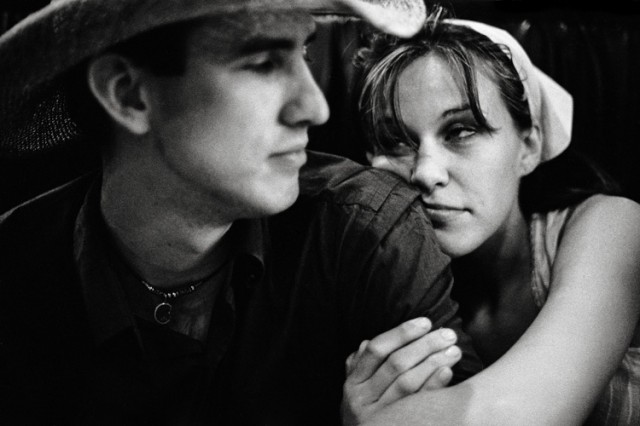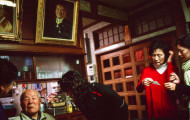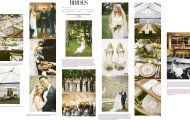What is silver gelatin? When I think of silver gelatin, the first image that pops into my brain resembles a gooey tower of shiny jewel-like jell-o. Silver what? Before I met Doug, my printing experience consisted of high school photography 101. In fact, until a couple minutes ago, the silver gelatin process was STILL mostly a mystery to me. I knew it had to do with SILVER (cool!) and I have seen the result (BEAUTIFUL!) and so REAL looking. These two dimensional photographs have the 3D feeling that you can reach into the image and touch, walk around, etc. Doug calls it the ‘depth of field.’ So, I did some poking around the internet, and learned quite a bit. In the world of analog photography, the silver gelatin process is a kick-butt photographic printing method that’s been around since the late 1800s! The materials include black and white film, printing paper, and a support material with the light sensitive coating of silver salts in gelatin. Expose it to light, and a couple lucky atoms in the crystalline grains of silver salt turn into SILVER.
Once it’s developed, is it done? The developed silver gelatin image remains extremely delicate to the elements, so we tone it to stabilize it, and this makes it archival to withstand the test of time. Toning adds a slight color to the silver gelatin print. Selenium toning is the most popular (and most affordable) of toning methods. It works by turning the silver into silver selenide, which is much more resistant to the elements. Other toning methods include even longer lasting sepia, and our favorite, gold toning.
Who’s our printer? Doug is a printer of museum gallery distinction, but decided long ago to step out of the darkroom, and focus on shooting instead of printing. In this way, he’s taken the route of many fine art photographers, finding a tremendous printer, and building a bond. Doug met Paul, our master printer, at Panopticon Imaging, and began building a solid artistic relationship when we lived in Boston. Paul has many accolades to his name, including printing pulitzer prize winning images. His handcrafted darkroom prints grace the walls of museum galleries and private collections.
Our biggest challenge: Spreading the word about the silver gelatin process was a hurdle in the beginning. many people just plain haven’t heard of it before unless they are a fellow photographer, have a curiosity about photography, or a degree in art, etc. We always approach a project as if it’s the first time, because I remember the first time I saw a silver gelatin print. It was by Ansel Adams, and totally cliche nowadays, but totally mind exploding at the time! So, we started to bring in a selenium toned silver gelatin print to every client and vendor meeting to start the conversation. Our clients usually come to us because they want something different. Something especially artful. The silver gelatin process affords them just that.
Why it’s the bee’s knees: The process remains pretty rare in the wedding industry. We searched for other photographers who offer it in California, and could count on one hand the small handful of like minded artists with a soft spot for weddings!!!! So it may be rare in the wedding world, but, it BLOOMS as a staple in the fine art and documentary worlds! There’s a richness to the print that’s incomparable, and it gets down to the roots of photography – this is how modern photography was first presented to the world. Just incredible.




